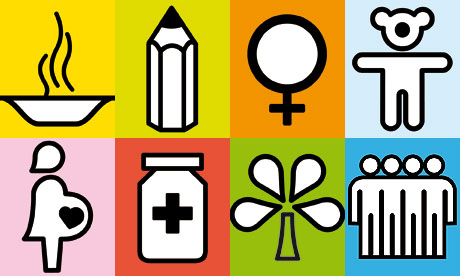
I am dedicating my first post to speak specifically on the Millennium Development Goals that originated from the Millennium Declaration produced by the United Nations. The Declaration believes that every one has rights and these rights include dignity, freedom, and equality. It also asserts that everyone has the right to a basic stand of living that includes freedom from hunger and violence, and encourages tolerance and solidarity. The MDGs were created in order to mobilize a solution to these ideas by creating targets a measurable indicators for the reduction of poverty in order to achieve the rights that were set forth in the Declaration in a timeline of fifteen years.
The MDG was signed in September 2000, eight goals with 21 targets, and each has measurable indicators:
Goal 1: Eradicate extreme poverty and hunger
Target 1A: Halve the proportion of people living on less than a $1 a day
Target 1B: Achieve Decent Employment for Women, Men, and Young People
Target 1C: Halve the proportion of people who suffer from hunger
Goal 2: Achieve universal primary education
Target 2A: By 2015 all children can complete a full course of primary schooling, girls and boys
Goal 3: Promote gender equality and empower women
Target 3A: Eliminate gender disparity in primary and secondary education preferably by 2005, and at all levels by 2015
Goal 4: Reduce child mortality rates
Target 4A: Reduce by two-thirds, between 1990 and 2015, the under-five morality rate
Goal 5: Improve maternal health
Target 5A: Reduce by three quarters, between 1990 and 2015, the maternal mortality ratio
Target 5B: Achieve, by 2015, a universal access to reproductive health
Goal 6: Combat HIV/AIDS, malaria, and other diseases
Target 6A: Have halted by 2015 and begun to reverse the spread of HIV/AIDS
Target 6B: Achieve, by 2010, universal access to treatment for HIV/AIDS for all those who need it
Target 6C: Have halted by 2015 and begun to reverse the incidence of malaria and other major diseases
Goal 7: Ensure environmental sustainability
Target 7A: Integrate the principles of sustainable development into country policies and programs; reverse loss of environmental resources
Target 7B: Reduce biodiversity loss, achieving by 2010 a significant reduction in the rate of loss
Target 7C: Halve, by 2015, the proportion of the population without sustainable access to safe drinking water and basic sanitation
Target 7D: By 2020, to have achieved a significant improvement in the lives of at least 100 million slum dwellers
Goal 8: Develop a global partnership for development
Target 8A: Develop further an open, rule based, predictable, non-discriminatory trading and financial system
Target 8B: Address the Special Needs of the Least Developed Countries (LDC)
Target 8C: Address the special needs of landlocked developing countries and small island developing states
Target 8D: Deal comprehensively with the debt problems of developing countries through national and international measures in order to make debt sustainable in the long term
Target 8E: In co-operation with pharmaceutical companies, provide access to affordable essential drugs in developing countries
Target 8F: In co-operation with the private sector, make available the benefits of new technologies, especially information and communications.



0 comments:
Post a Comment